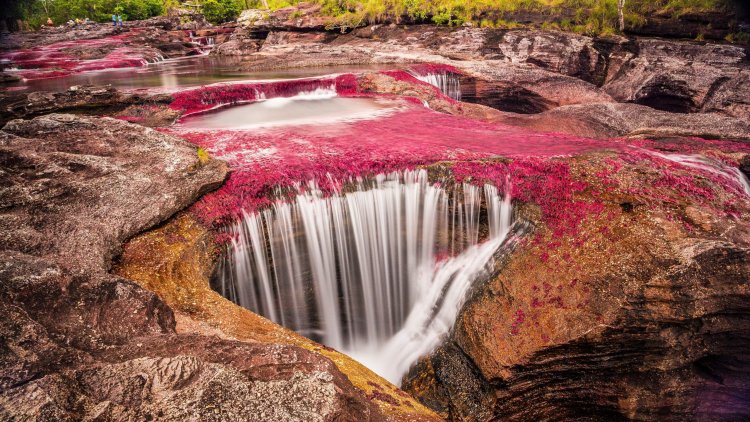A river of five colors in the heart of Colombia
From June to December, this river is a unique place on the entire planet thanks to the changing shades of blue, red, yellow, orange and green.

On the east of the Andes, in central Colombia, is the unusual river called Cano Cristales or Crystal Canyon, which stretches for 100 kilometers. It is sometimes called a liquid rainbow, because of the colors that change during certain months into shades of blue, red, yellow, orange, and green, making the landscape a unique place on the entire planet.
By the mid-2000s, guerrilla activity nearby had made Cano Cristales completely inaccessible. Today, however, the Colombian army controls an area of 30 km around La Macarena, a city that serves as a gateway to this river, making the area open and safe for tourists. Some people think that the specific color of Cano Cristales comes from algae or moss, but the real culprit is the endemic plant species Macarenia clavigera which requires special conditions, including a certain water level and the amount of sunlight to appear in beautiful colors.
The river of five colors in its full splendor can be seen from June to December, and from January to May during the dry season, Cano Cristales is closed to tourists.
Cano Cristales may be a new attraction for tourists, but the residents of this area have known about the river and its unusual nuances for generations. Many areas in and around the liquid rainbow have been named by locals, including Piscina Carol (Carol's Basin), which received this name after a man heard the birth was less painful in the water and urged his wife to give birth and give birth to daughter Carol in calm, sheltered water along this river.
In the vicinity of Cano Cristales is Los Llanos, which covers 16 million hectares and makes up a quarter of the total landmass of Colombia. Los Llanos is home to some of the richest tropical pastures in the world. Here are the largest number of endangered reptiles on Earth.





























